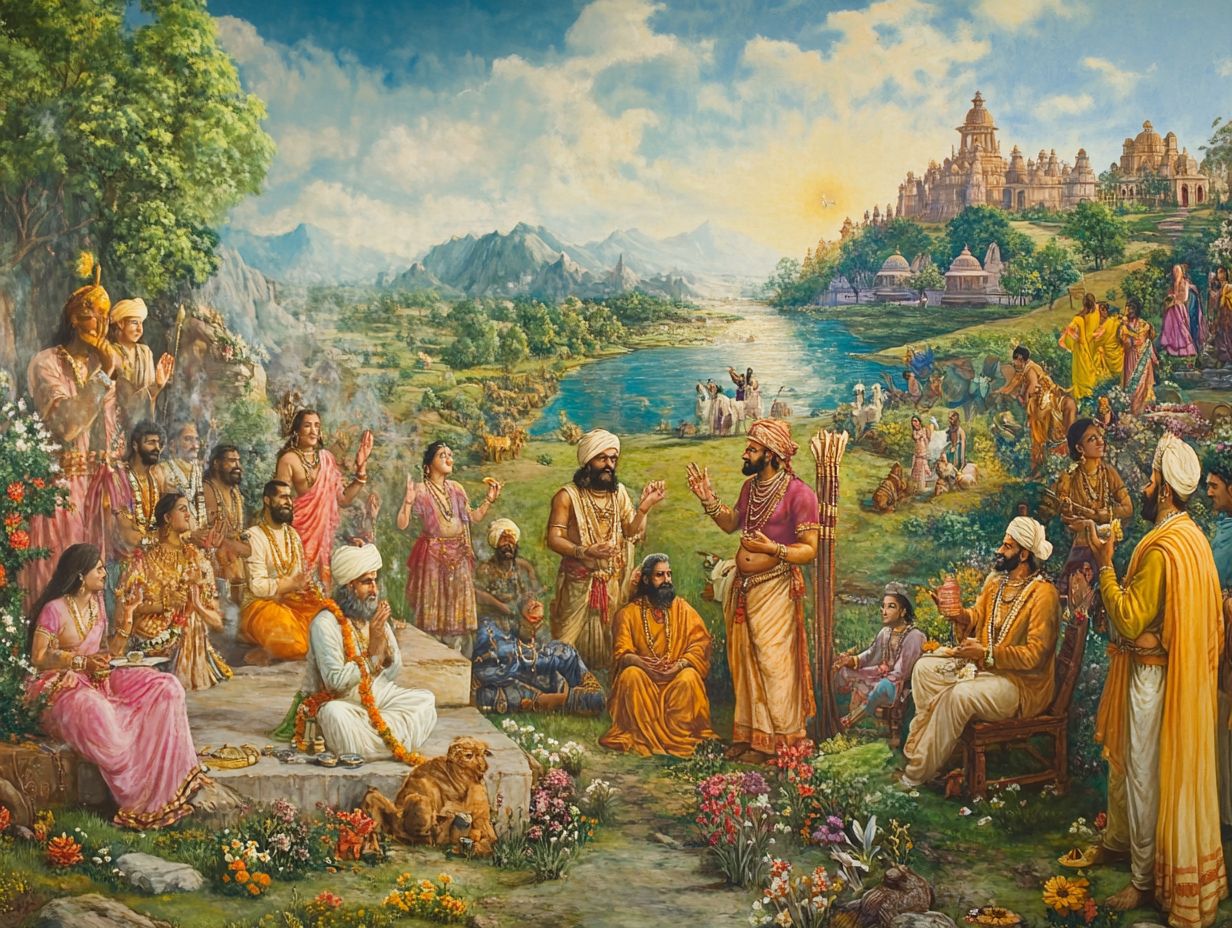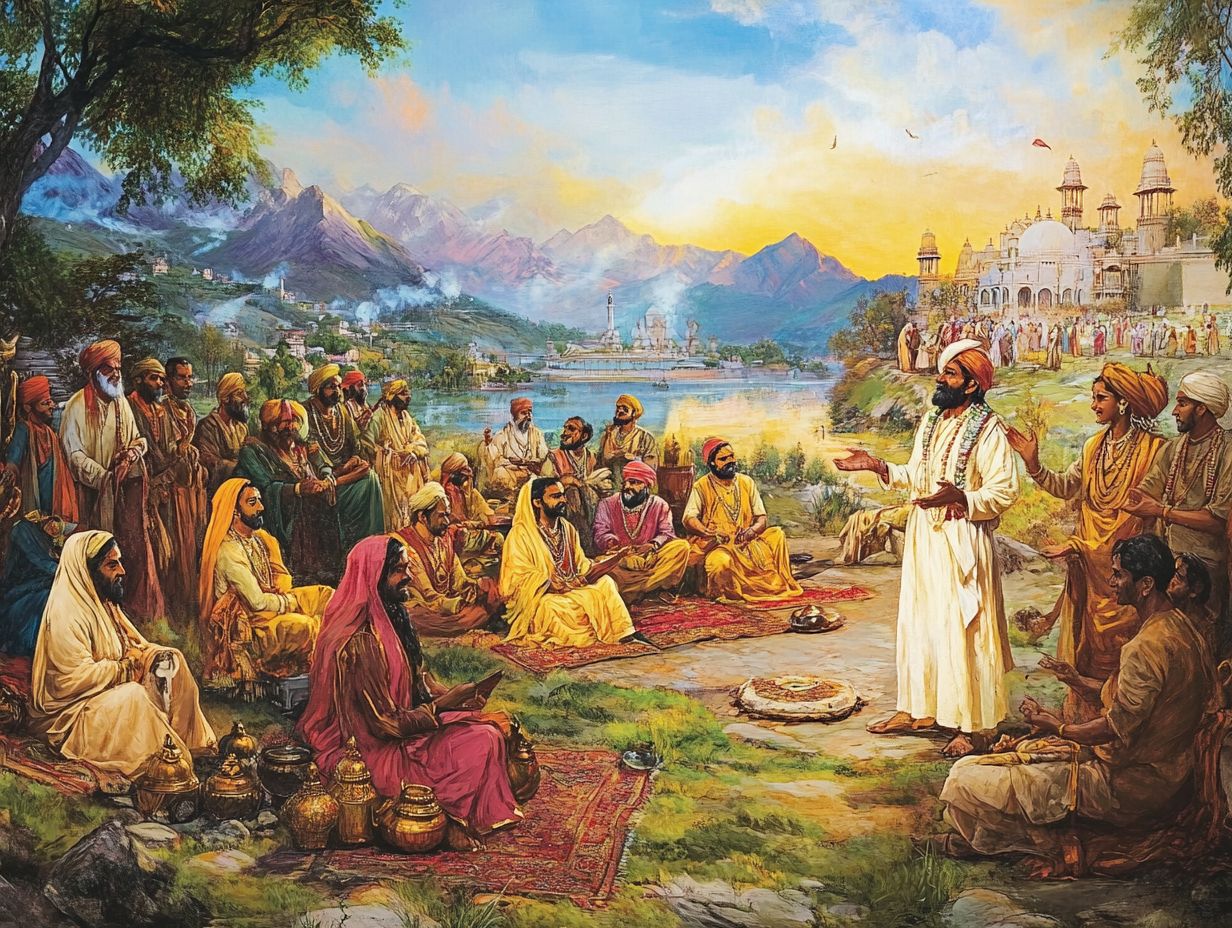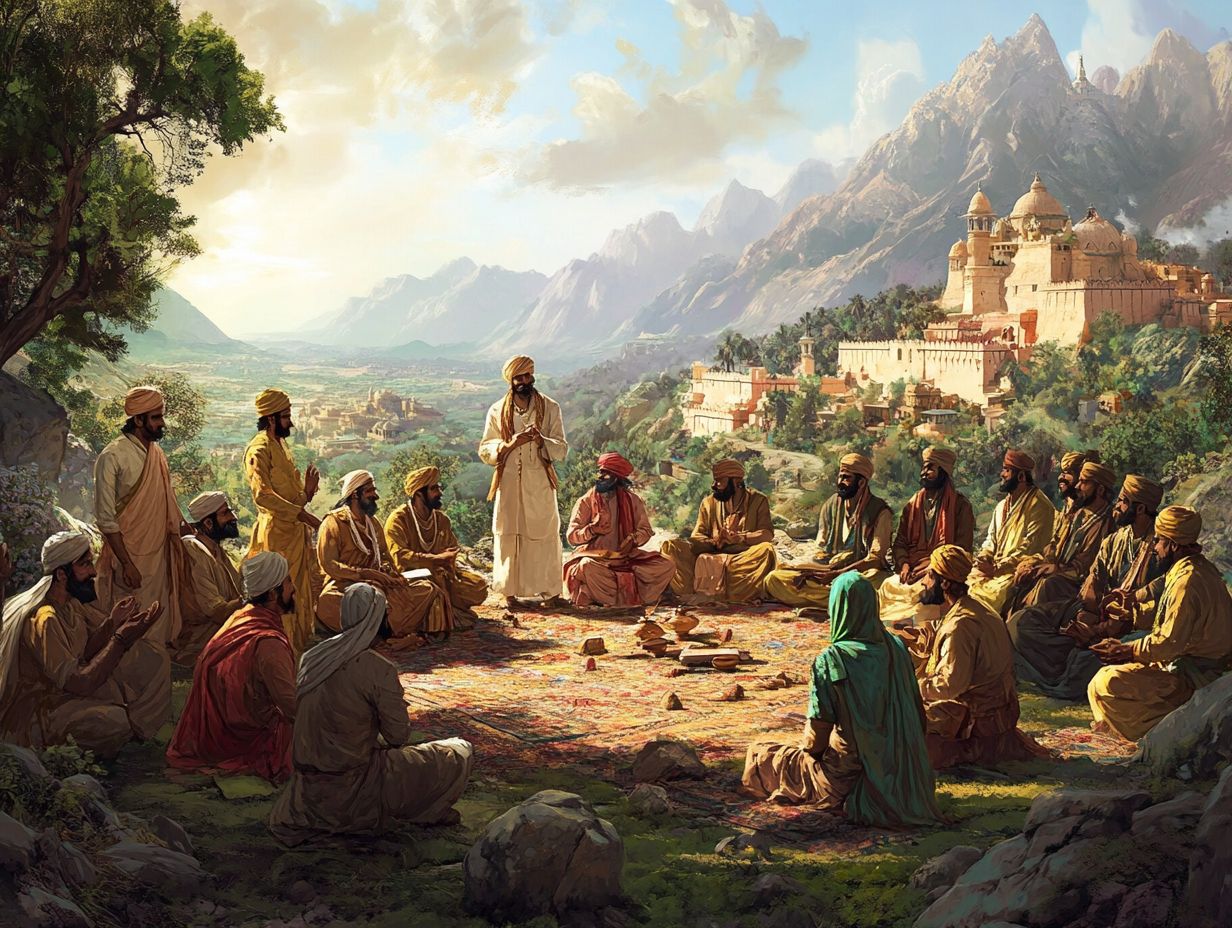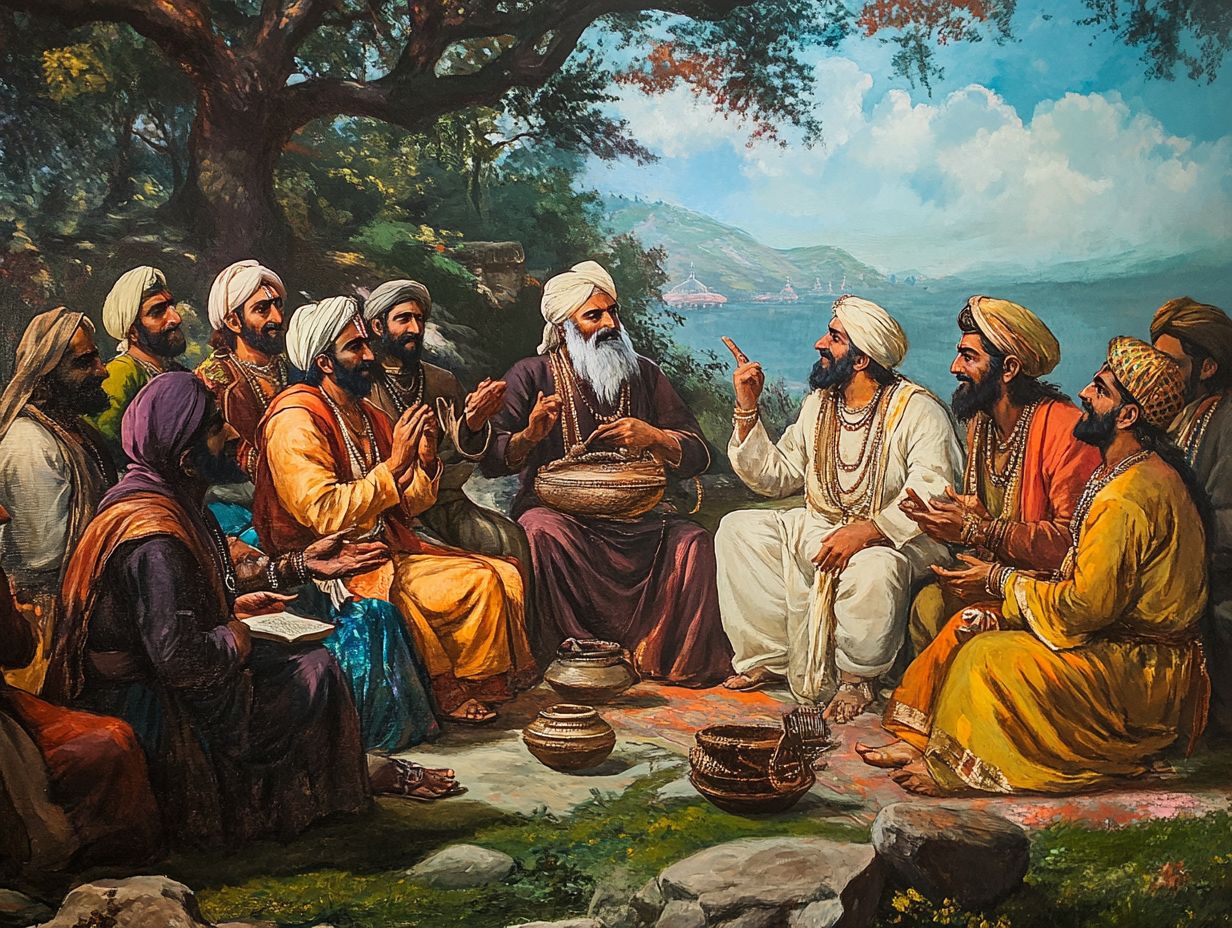How Did the Interaction of Hinduism and Islam Affect Slavery in India Around 1000?
The history of slavery in India presents a complex tapestry woven from intricate religious, social, and economic threads. From the ancient texts of Hinduism to the conquests of Muslim rulers, various factors, including colonialism and socio-political relations, have contributed to the emergence and evolution of slavery within the Indian subcontinent.
This exploration delves into the principal causes of slavery in India, examining the perspectives of both Hindu and Islamic scriptures regarding the practice. It highlights how the interplay between these two major religions has profoundly influenced the institution of slavery.
Additionally, the analysis considers the impact of these interactions on the status of slaves and the eventual movement towards abolition.
The journey invites a deeper understanding of the multifaceted dimensions of slavery in India, revealing layers of historical significance that continue to resonate today.
The History of Slavery in India

The history of slavery in India unfolds as a complex tapestry intricately woven from a myriad of sociopolitical factors, cultural traditions, and economic systems that have shaped the subcontinent’s social structure.
As early as 1000 CE, slavery became interwoven into the very fabric of Indian society, influenced by the interplay of religious beliefs, trade practices, and regional governance.
With demographic shifts and the emergence of powerful empires such as the Mughal Empire, the institution of slavery experienced profound transformations, mirroring the ethical dilemmas confronted by society and the lasting impact it has left on the region’s cultural heritage.
What Were the Main Causes of Slavery in India?
The primary causes of slavery in India can be traced to a confluence of factors, particularly the agrarian society’s dependence on forced labor, the demands of trade, and the deeply entrenched social hierarchy that defined historical interactions among communities.
Within this intricate framework, agrarian practices were pivotal in driving the demand for labor, as landowners sought to optimize their agricultural yields. This pursuit necessitated the exploitation of laborers, who, often ensnared by economic hardship, found themselves entangled in cycles of debt and servitude. The expansive trade networks further intensified the issue, fostering a market in which human labor became commodified and exchanged. Additionally, the rigid caste system played a significant role, with individuals from lower castes enduring systemic discrimination, frequently coerced into working under oppressive conditions.
These interconnected socio-economic dynamics not only perpetuated the institution of forced labor but also entrenched its presence in myriad forms throughout Indian society.
Hinduism and Slavery in India
Hinduism’s relationship with slavery in India unveils a complex tapestry woven from ancient texts, prevailing social norms, and the intricate caste system that has long governed societal roles and moral values within the community.
The interpretations of scripture regarding slavery and servitude exhibit a diverse array of ethical considerations, revealing a spectrum of acceptance and resistance throughout various historical epochs.
A nuanced understanding of how Hinduism influenced the practices and justifications for slavery is essential for grasping the intricate moral dilemmas confronted by individuals and communities across the subcontinent.
What Are the Hindu Scriptures’ Views on Slavery?
Hindu scriptures offer a rich tapestry of perspectives on slavery, where moral values and ethical dilemmas intricately weave together with spiritual teachings, shedding light on the complexities of servitude in ancient Indian society.
Delving into texts such as the Manusmriti and the Mahabharata unveils a spectrum of interpretations concerning the nature of servitude, often mirroring the socio-economic realities of their respective eras. These ancient works not only delineate the duties and obligations of both masters and servants but also explore themes of justice, compassion, and dharma.
The ethical considerations posited by these scriptures continue to resonate in the modern context, sparking vital discussions on human rights and the significance of individual agency. By scrutinizing the implications of these teachings, one can discern how they have molded societal norms and influenced personal experiences, underscoring the enduring relevance of these texts in contemporary conversations about morality and ethics.
How Did the Caste System Contribute to Slavery in India?
The caste system has significantly influenced the perpetuation of slavery in India, establishing a rigid social structure that delineates societal roles and lays the groundwork for the institutionalization of servitude and forced labor. This hierarchical framework not only created distinct boundaries between various castes but also dictated the nature of work and the rights afforded to individuals based on their social standing.
For example, the upper castes typically held positions of authority, governance, and intellectual engagement, while individuals from lower castes were often confined to menial labor, enduring systemic discrimination and marginalization. Such distinctions not only enabled the exploitation of lower castes but also fostered a pervasive sense of legitimacy regarding their oppression, reinforcing the belief that their roles as laborers or servants constituted a natural order.
Consequently, the intricate relationship between caste and slavery has left an enduring mark on Indian society, influencing economic, social, and cultural dynamics across generations.
Islam and Slavery in India

The introduction and establishment of Islam in India marked a profound transformation in the understanding and practice of slavery, shaped by a confluence of religious beliefs, cultural exchanges, and the socio-political dynamics of the Mughal Empire.
This rich interaction not only altered the institution of slavery but also sparked discussions on conversion, communal harmony, and human rights, ultimately reconfiguring the ethical landscape surrounding servitude during that era.
What Are the Islamic Scriptures’ Views on Slavery?
Islamic scriptures present a nuanced perspective on slavery, addressing ethical considerations, spiritual beliefs, and the treatment of slaves, all while reflecting the broader historical context of their time.
Within these texts, the emphasis on justice and compassion emerges as a central theme, advocating for fair and humane treatment of individuals, irrespective of their status. The teachings underscore the notion that freeing slaves is not merely an act of kindness but also a form of atonement, urging followers to adopt values that resonate deeply with contemporary discussions surrounding human rights.
This viewpoint holds considerable relevance in modern Indian society, where social hierarchies and caste systems continue to shape interactions. By diving into these principles, one can discern how Islamic values promote equality and dignity, actively challenging societal norms that permit inequality.
How Did the Conquest of India by Muslim Rulers Affect Slavery?
The conquest of India by Muslim rulers profoundly influenced the practice of slavery, introducing new power dynamics, facilitating cultural exchanges, and altering the region’s existing social structures. As these conquests unfolded, the institution of slavery underwent a transformation, weaving intricate patterns of cultural assimilation and adaptation.
The emergence of a new Muslim elite brought distinct notions of servitude, reshaping the labor hierarchy and introducing a more nuanced relationship between masters and slaves. While some indigenous practices lingered, the interaction with Islamic principles gave rise to varied forms of servitude, encompassing roles that ranged from domestic responsibilities to military positions.
This blending of traditions crafted a unique narrative that mirrored the changing power dynamics alongside the enduring hierarchies still in play, as former social roles were reevaluated within this evolving framework.
The Interaction of Hinduism and Islam on Slavery in India
The interaction between Hinduism and Islam concerning slavery in India unfolds as a complex tapestry woven with cultural exchange, interfaith relations, and instances of syncretism, all of which emerged in response to the prevailing social realities.
This dialogue illuminated both the commonalities and conflicts inherent in the two religions, shaping the practices of slavery and the ethical considerations that surrounded it within Indian society.
Did Hinduism and Islam Have Different Views on Slavery?
Hinduism and Islam present markedly different perspectives on slavery, shaped by each religion’s ethical considerations and historical contexts that inform their teachings and practices surrounding servitude.
Hinduism has traditionally embraced the varna system, which organizes society into hierarchical categories, influencing attitudes toward servitude. In contrast, Islam promotes a universal brotherhood and emphasizes the fair treatment of slaves, underscoring the significance of compassion and justice.
This divergence is particularly pronounced in how each faith addresses the moral implications of slavery. Within Hindu culture, the acceptance of servitude may be interpreted as a manifestation of karmic consequences and spiritual beliefs. Conversely, Islamic teachings advocate for the eventual emancipation of enslaved individuals, presenting a compelling ethical argument against the enduring bondage of human beings, underscoring religious tolerance and human rights.
These contrasting viewpoints not only illuminate the foundational principles of each belief system but also reflect their broader impact on societal norms and behaviors pertaining to freedom, equality, and ethical considerations.
How Did the Practice of Slavery Change with the Interaction of Hinduism and Islam?

The practice of slavery in India underwent significant transformation through the interplay between Hinduism and Islam, leading to a rich blend of cultural exchanges and shifts in societal norms that fundamentally redefined the concept of servitude. This interaction also highlights the historical impact and the medieval period around 1000 CE.
This fusion of beliefs prompted a profound reevaluation of individual roles within the hierarchical framework of society, resulting in definitions and experiences of slavery that diverged markedly from earlier practices. As Muslim rulers asserted their authority, they introduced new modalities of labor exploitation and economic exploitation alongside traditional Hindu practices, crafting a complex tapestry in which captives fulfilled various roles, from domestic responsibilities to military service and labor systems.
These evolving dynamics not only posed challenges to the entrenched caste system but also facilitated the emergence of new identities for those forcibly subjected to servitude, rendering individual experiences more nuanced, reflecting the socio-political relations and power dynamics of the time. Consequently, the convergence of these religious traditions reshaped perceptions, redefining social relationships and the lived realities of those enduring oppression and caste discrimination.
The Impact of Hinduism and Islam on Slavery in India
The influence of Hinduism and Islam on the institution of slavery in India is profound, reflecting the broader interaction and cultural exchange. Both religions intricately shaped the social status of slaves while significantly impacting the economic systems and power relations that governed their existence in the Indian subcontinent.
This dynamic interplay ultimately led to notable reform movements and social reform throughout history, influencing jurisprudence, governance, and the social hierarchy.
Did the Interaction of Hinduism and Islam Lead to the Abolition of Slavery in India?
The interaction between Hinduism and Islam played a pivotal role in the abolition of slavery in India, as reform movements arose in response to shifting ethical considerations and societal pressures, including socio-cultural analysis and humanitarianism. These dialogues cultivated a collective understanding of human dignity, prompting social reformers to question the moral legitimacy of slavery and advocate for liberation.
Prominent figures from both religious traditions began to advocate for the rights of marginalized individuals, highlighting compassion and justice as fundamental principles of their faiths. The socio-political environment of the period, characterized by British colonialism and imperialism, further influenced this movement by introducing new legal frameworks and concepts of human rights.
As a result, the interplay of religious beliefs and social reform established a foundation for a united opposition to the institution of slavery, ultimately contributing to its decline across the subcontinent and challenging the social structure.
How Did the Interaction of Hinduism and Islam Affect the Social and Economic Status of Slaves in India?
The interaction between Hinduism and Islam profoundly influenced the social and economic status of slaves in India, giving rise to new societal roles and economic opportunities that fundamentally reshaped their lives. This interaction also reflects the historical sociology and historical context of the medieval period around 1000 CE.
This dynamic interplay not only redefined the slaves’ position within their communities but also prompted a critical reassessment of their rights and social responsibilities. With the introduction of Islamic culture and trade practices, many of these individuals discovered pathways to upward mobility through skilled labor and engagement in emerging markets, reflecting on commerce and economic structures.
As a result, their economic contributions began to receive recognition, leading to a shift in societal perceptions that afforded them a more defined role within the social fabric, highlighting the influence of power dynamics and the agrarian society.
This evolution ignited discussions surrounding identity and caste, ultimately impacting broader social structures throughout India, where the implications of these interactions transformed communal relationships, challenged entrenched hierarchies, and facilitated interfaith dialogue.
Frequently Asked Questions
How did the interaction of Hinduism and Islam shape the practice of slavery in India around 1000?

The interaction of Hinduism and Islam played a crucial role in shaping the practice of slavery in India around 1000 CE. As Islam spread in India during this time, it introduced new ideas and customs regarding slavery that clashed with traditional Hindu beliefs, reflecting the religious conflict and cultural identity of the period.
Did both Hinduism and Islam have a role in the acceptance of slavery in India around 1000?
Yes, both Hinduism and Islam played a role in the acceptance of slavery in India. While Hinduism had a long history of slavery, Islam also had its own customs and beliefs surrounding the practice. The interaction of these two religions further reinforced the acceptance of slavery in India, reflecting on the socio-political relations and historical narratives.
How did the caste system in Hinduism impact the treatment of slaves in India around 1000?
The caste system in Hinduism played a significant role in shaping the treatment of slaves in India around 1000 CE. Slaves were often considered to be at the bottom of the social hierarchy and were subjected to harsh treatment and caste discrimination based on their caste status, reflecting on the social structure and caste system.
Did the spread of Islam lead to an increase in the number of slaves in India around 1000?
Yes, the spread of Islam did lead to an increase in the number of slaves in India during this time. As Islamic armies conquered new territories, they often enslaved the local population, leading to an influx of slaves in the Indian subcontinent. This also led to changes in power dynamics and labor systems, reflecting on migration patterns and socio-cultural analysis.
How did the religious beliefs of Hindus and Muslims differ in their views on slavery in India around 1000?
Hinduism and Islam had contrasting views on slavery, which ultimately influenced their treatment of slaves in India around 1000 CE. While Hinduism saw slavery as a natural part of society, Islam viewed it as a means of converting non-Muslims to Islam and improving their social status, reflecting on spiritual beliefs and theological discourse.
Were there any attempts to abolish slavery in India around 1000?
Yes, there were efforts to abolish slavery in India around 1000 CE. The Bhakti movement, a devotional movement in Hinduism, advocated for the equality and liberation of all individuals, including slaves, reflecting on social reform and activism. However, these attempts were largely unsuccessful in fully abolishing the practice of slavery in India.
